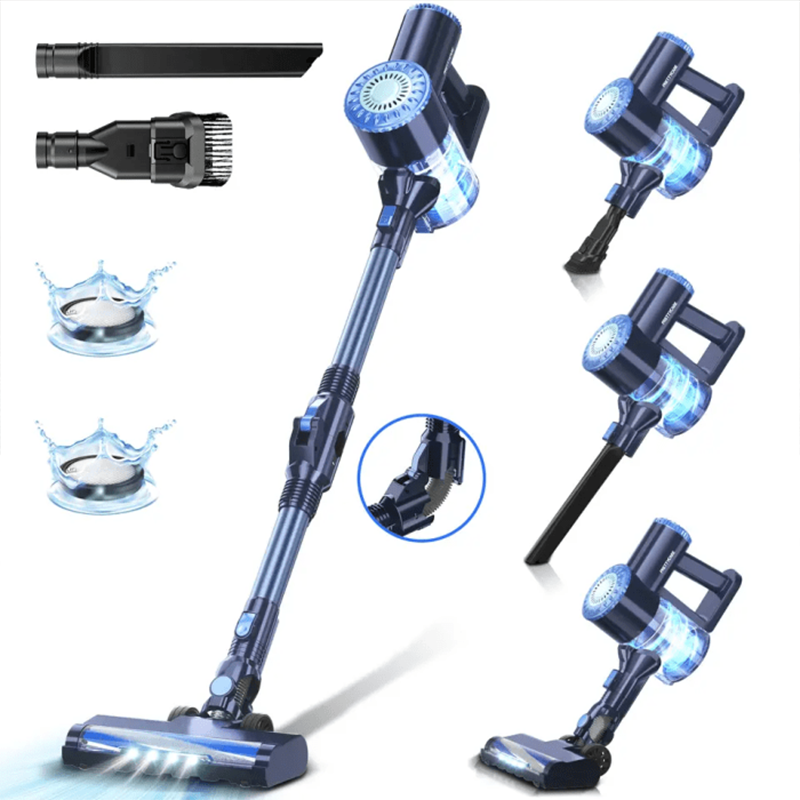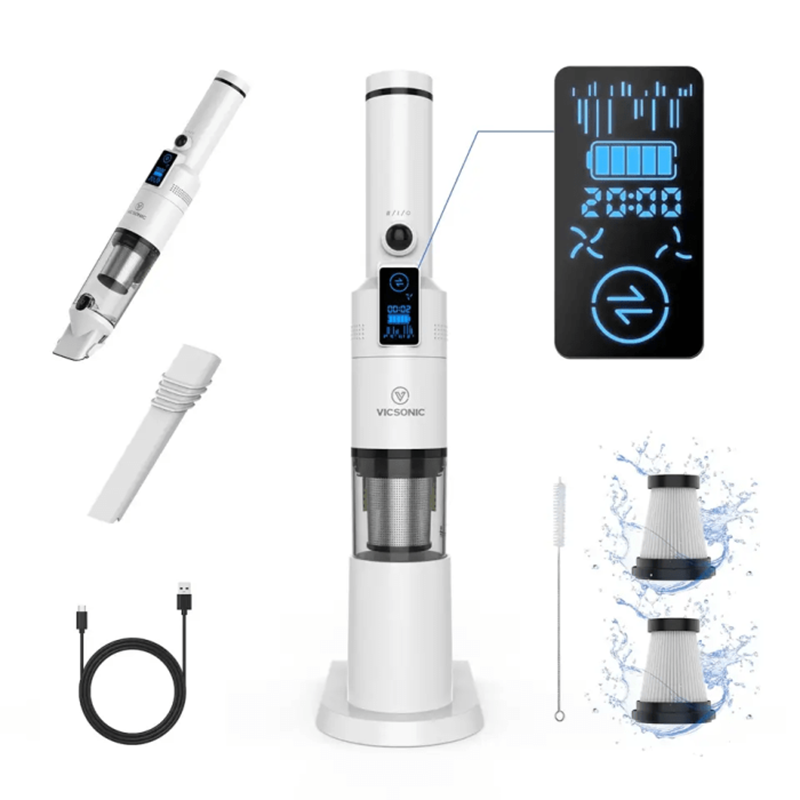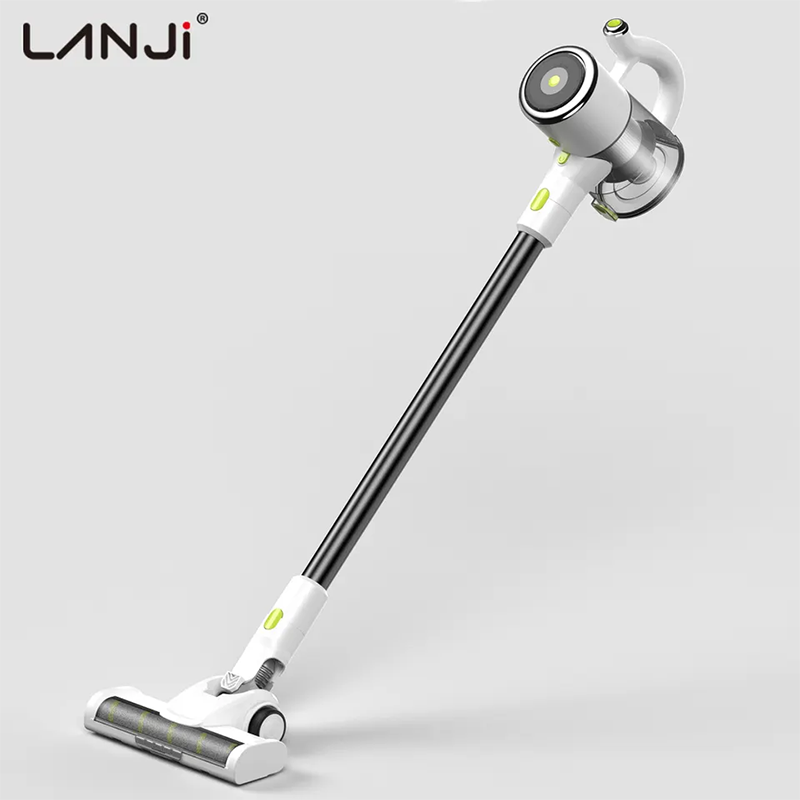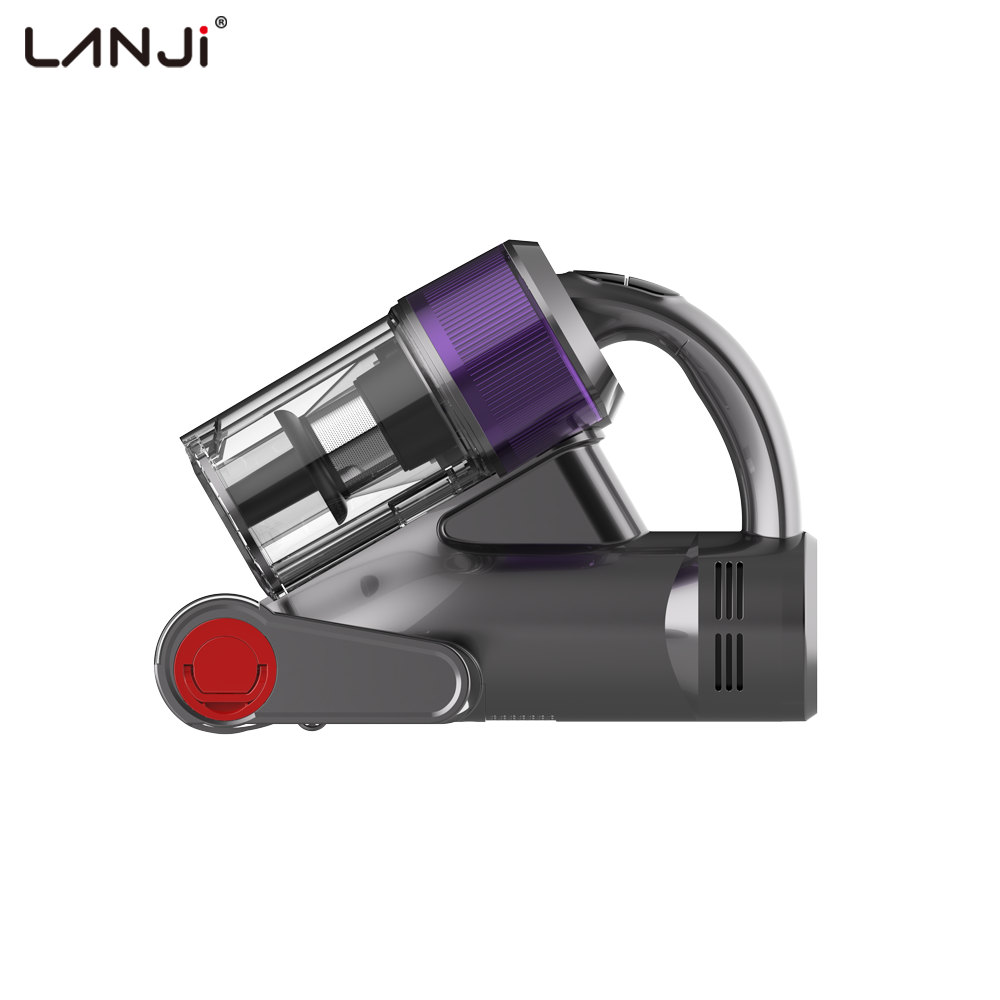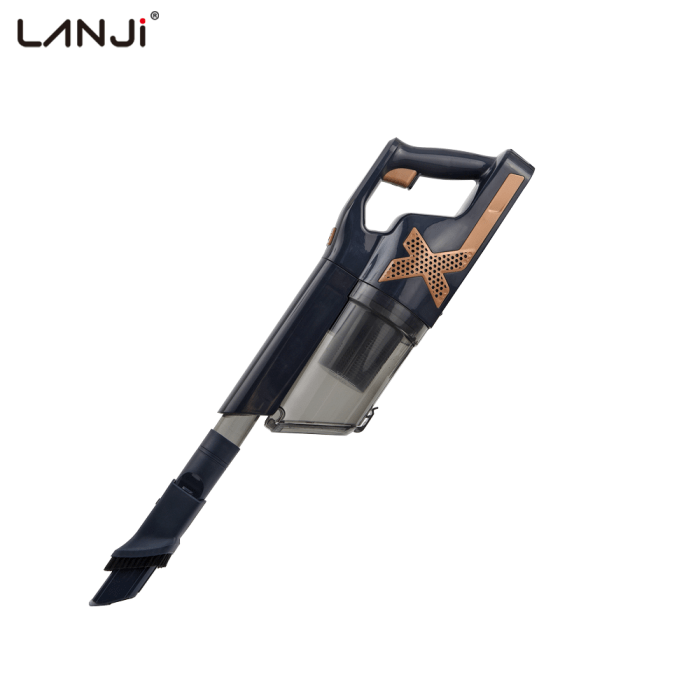A squeegee is a window cleaning tool primarily consisting of a rubber blade attached to a handle. As the squeegee glides across the window surface, the rubber blade is firmly pressed against the glass, effectively removing nearly all water and liquids, leaving the surface clean, shiny, and free of marks or streaks.
However, a significant challenge lies in removing the accumulated water from the rubber blade itself. Some squeegees are equipped with a sponge or microfiber pad to assist in removing excess water, but these pads require periodic squeezing.
Window vacuums, on the other hand, also utilize rubber blades similar to manual squeegees. But the key difference is the integration of a vacuum motor that generates suction, efficiently eliminating all liquids collected by the rubber blade.
It's worth noting that both manual squeegees and window vacuums can have blades crafted from materials like foam or plastic. Nevertheless, rubber blades remain the most popular choice due to their unique combination of flexibility and firmness.
Owing to these distinct features, manual squeegees offer a lighter and more cost-effective solution compared to window vacuums. However, window vacuums generally accomplish the task with greater ease and speed.
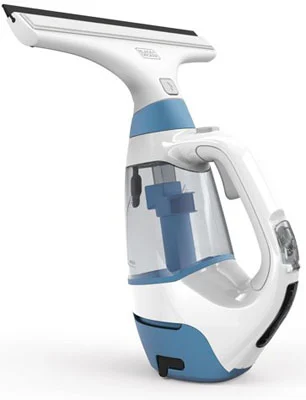
The squeegee is a window cleaning tool that comprises a rubber blade mounted on a handle. As the squeegee traverses the window surface, the rubber blade is pressed firmly against the glass, effectively removing virtually all water and liquids, leaving the surface clean, shiny, and free of marks and streaks.
However, a significant challenge lies in removing the water from the rubber blade itself. Some squeegees are equipped with a sponge or microfiber pad to assist in removing excess water, but these pads require periodic squeezing.
Window vacuums, on the other hand, also utilize rubber blades similar to manual squeegees. However, these blades are combined with a vacuum motor that generates suction, efficiently removing all liquids collected by the rubber blade.
It is worth noting that both manual squeegees and window vacuums can feature blades made from materials such as foam or plastic. Nevertheless, rubber blades are the most common choice due to their flexibility and firmness.
Because of these distinct features, manual squeegees are typically lighter and cheaper than window vacuums. However, window vacuums generally perform the task more easily and quickly.
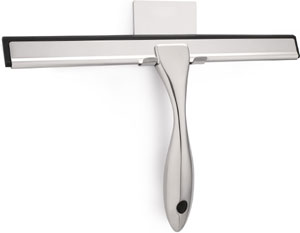
Most window vacuums are cordless, handheld, wet vacuums, boasting unique features that set them apart from other cleaning devices:
Rubber blades ranging from 8 to 12 inches (20-30 cm) wide are designed specifically for cleaning windows, mirrors, showers, and other surfaces. The wider the blade, the larger the surface area that can be cleaned with a single stroke. However, excessively wide blades can be cumbersome to use on smaller surfaces and require more powerful motors, resulting in heavier, bulkier, and pricier vacuum cleaners.
A dirty water tank is incorporated to store the collected dirty water or liquids within the vacuum. Given the compactness of these units, the tank capacity is typically limited to 0.1 – 0.2 liters, which nonetheless suffices for most cleaning tasks.
Lithium-ion batteries provide fade-free power, ensuring consistent performance. Window vacuums do not require as powerful motors as conventional cordless vacuums, thus the onboard motors are limited to 10-30 watts. Such motors can be efficiently powered by 1-2 cell lithium-ion batteries, providing a runtime of 15-30 minutes on a single charge.
A spray bottle with a microfiber pad often serves as a separate cleaning tool. It is used to dispense the window cleaning solution (usually a mixture of water and window detergent concentrate) and then clean the window with the microfiber pad. While the solution bottle/spray and microfiber pad can be integrated into the window vacuum cleaner, this often results in a more complex and bulkier unit. Personally, I prefer them as two separate units for convenience and flexibility.
A range extension set is available to enhance the cleaning range, which is especially crucial for cleaning elevated surfaces. These range extension sets may be included as a standard part of the window vacuum set or ordered separately.
Notably, window vacuums are exceptionally user-friendly and low-maintenance devices. However, given that each model often comes with unique features that differ from other, even seemingly similar, units, it is highly recommended to thoroughly read the manual/instructions before the initial use to ensure optimal performance and satisfaction.
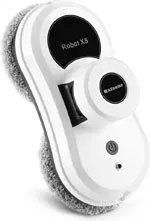
Robot window vacuum cleaners are semi-automatic devices designed to efficiently clean large, flat surfaces.
These cleaners eliminate the need for users to climb ladders and expose themselves to unnecessary risks when cleaning high, hard-to-reach windows in houses or buildings.
To minimize weight, most robot window vacuums feature a long but slender power cord, ensuring the unit remains lightweight.
Most robot vacuums incorporate two motors: one powers the rotating microfiber pads (dependent on the cleaning tool) and the other generates suction to remove liquids from the glass and maintain a secure attachment to vertical surfaces.
To safeguard against power outages or motor malfunctions, window robot vacuums often incorporate a safety wire. In the event of a power failure, this wire prevents the vacuum from falling.
Window robot vacuums can be controlled via IR remote, WiFi in tandem with smartphone applications, and similar methods. Notably, these robots can operate outdoors while the user remains indoors, allowing for a convenient and enjoyable cleaning experience.
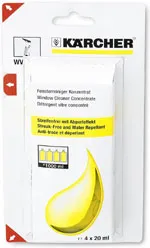
Window cleaning detergents are typically sold in concentrated form and require dilution with water before use.
These specialized detergents are not only effective in removing dust and other loosely adhered dirt, but they are also formulated to tackle stubborn, dried-on stains.
Furthermore, window cleaning detergents help prevent the accumulation of new dust particles and other impurities, ensuring that windows and mirrors remain cleaner for a longer duration.
Often, these detergents feature a refreshing scent that enhances the sense of freshness and cleanliness.
It is crucial to use window cleaning detergents as per the manufacturer's recommendations. In most cases, they are safe for use and environmentally friendly, posing no harm to pets or children. However, it is essential to read the instructions, including the fine print, to ensure proper usage.
Tap Water vs Demineralized Water?
Whether one is a perfectionist or not, nobody desires to see streaks, stains, or marks on freshly cleaned windows.
Although tap water mixed with window cleaning detergents generally does not leave streaks if properly removed from the surface, carelessness during the cleaning process can lead to the formation of streaks and stains from water residue as the water evaporates.
To eliminate such streaks, one can opt for using distilled or demineralized water, which leaves minimal mineral residue on the window after evaporation.
Demineralized water is produced through the reverse osmosis process, while distilled water is created by condensing water vapor after boiling.
While demineralized water is slightly cheaper than distilled water, it is not as pure. However, both types of water, combined with window cleaning detergents, can effectively clean windows, leaving no streaks or stains.
On the other hand, tap water offers a significant cost advantage.
In summary, if you frequently need to clean large surfaces such as windows, mirrors, showers, car windows, and countertops, and you wish to expedite the cleaning process, investing in a high-quality window vacuum cleaner is a worthwhile consideration.

 EN
EN
 AR
AR
 FR
FR
 DE
DE
 IT
IT
 JA
JA
 KO
KO
 PT
PT
 RU
RU
 ES
ES





